Mark Sullivan
*****istrator of 1%FOC
Orchid Conservation and success
Success is a relative thing especially when it comes to conservation. I do I agree with many it looks very bleak. I fully expect the rate of species extinction to continue to at its current pace and get faster. We are seeing the greats mass extinction species on the planet since the meteorite hit.
Baodai you are right there is a lot of corruption and people have to feed their families. I know that here are some examples Indonesia:
http://www.orchidconservationcoalition.org/hl/bukitbarisanselatan.html
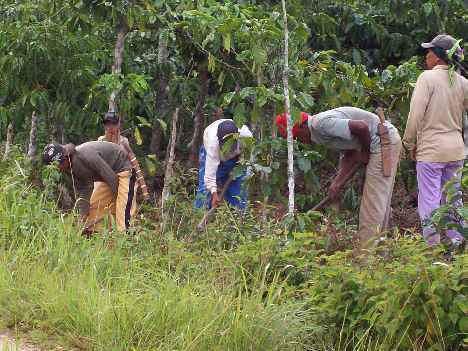
Workers cultivating coffee illegally in Bukit Barisan Selatan National Park photo by Kathleen Sullivan
Another story: http://www.orchidconservationcoalition.org/hl/gunungleuser.html
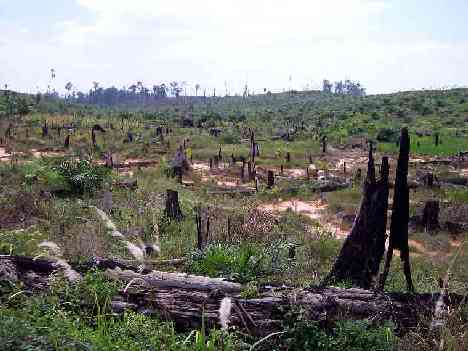
Deforestation just outside Gunung Leuser National Park photo by Kathleen Sullivan
This is all happening in supposed national parks. There are going to be casualties. So do we just fold up our seats and go home and complain about it all on forums? about how it is all going to hell in a hand basket? Or do we try and take one small step and do the best that we can? It is possible we will save very little and our effort will be futile but no effort to try and save habitat and we will definitely fail.
There are good organization like Ecominga in Peru. http://www.orchidconservationcoalition.org/hl/ecuadorecominga.html
with trustworthy local guards that believe in what they are doing:
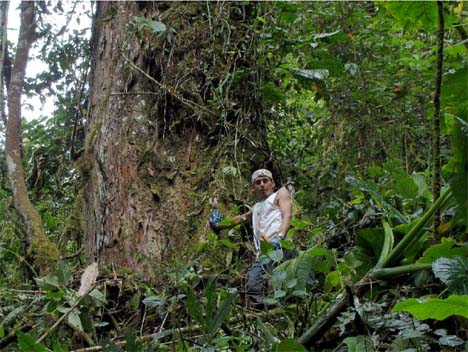
Our guard Luis Recalde with a giant mahogany tree in Candelaria. Photo Juan Pablo Reyes.
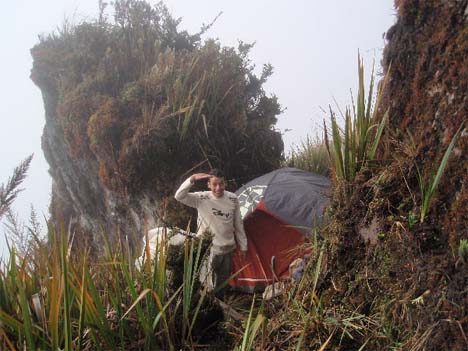
Reserve caretaker Fausto Recalde in the high paramo of Cerro Candelaria. Photo Luis Recalde
You are right Howzat, Guido and others CITES has problems and it is not going to solve any problems. It exists and we have to deal with it. I would though waste to much time complaining about it because its not going to change anytime soon. But Howzat there are people in South America and Asia that do care and want to do the right thing.
Valenzino you have good suggestions in your post and you are correct that if we have any chance of success "In my opinion all things have to be putted together." There are going to have to be multiple approaches to conservation for any success. It is going to be slow. It is going to take many people. Many people taking small steps and some big steps.
Ex situ conservation has got to be part of the package but it has it pit falls also. I wrote an article called "The Challenges of Ex situ Orchid Conservation" http://www.orchidconservationcoalition.org/pr/exsitucon.html which outlines many challenges. “Genomic extinction” through hybridization maybe one that people are not familiar with.
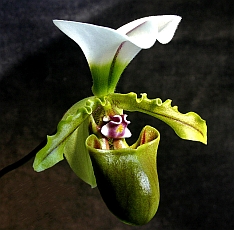
Paphiopedilum spicerianum photo by Gordon Kenyon
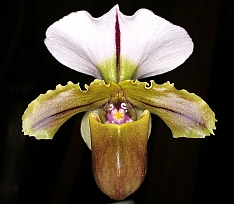
Paphiopedilum spicerianum 'Monster' HCC photo and grown by Ramon de los Santos
Towards the bottom of this article are some suggestions for ex situ
conservation. One of which this forum as a whole and its members could do.
Just substitute Slippertalk Orchid Forum for orchid society:
"The National Council for the Conservation of Plants and Gardens in the United Kingdom has a Program called the National Plant Collections, which is to be “as complete a representation of a genus or section of a genus as possible.” Some orchid genera are in this collection. A similar program could be set up with orchid societies. Orchid societies could choose to be the keepers of as complete a representation of a genus or section of a genus as possible. The collective members of the society would maintain the genus representation in their various growing situations. They could help guarantee the genetic diversity of species in the genus. Societies could choose to be the keepers of several genera. If different societies overlap by keeping the same genus, this would be beneficial. It could promote interaction between societies. An easy way to begin would be for orchid societies to assess which species their members grow. This would be an indication of the genus the society could become involved in with an ex situ conservation effort. Then orchid society members would become direct participants in orchid conservation. The effort would give orchid societies another dimension of interest in keeping and attracting new members."
Thanks for reading and having an interest in orchid conservation.
Thanks Mick for your kind words and support. It is appreciated.
Success is a relative thing especially when it comes to conservation. I do I agree with many it looks very bleak. I fully expect the rate of species extinction to continue to at its current pace and get faster. We are seeing the greats mass extinction species on the planet since the meteorite hit.
Baodai you are right there is a lot of corruption and people have to feed their families. I know that here are some examples Indonesia:
http://www.orchidconservationcoalition.org/hl/bukitbarisanselatan.html

Workers cultivating coffee illegally in Bukit Barisan Selatan National Park photo by Kathleen Sullivan
Another story: http://www.orchidconservationcoalition.org/hl/gunungleuser.html

Deforestation just outside Gunung Leuser National Park photo by Kathleen Sullivan
This is all happening in supposed national parks. There are going to be casualties. So do we just fold up our seats and go home and complain about it all on forums? about how it is all going to hell in a hand basket? Or do we try and take one small step and do the best that we can? It is possible we will save very little and our effort will be futile but no effort to try and save habitat and we will definitely fail.
There are good organization like Ecominga in Peru. http://www.orchidconservationcoalition.org/hl/ecuadorecominga.html
with trustworthy local guards that believe in what they are doing:

Our guard Luis Recalde with a giant mahogany tree in Candelaria. Photo Juan Pablo Reyes.

Reserve caretaker Fausto Recalde in the high paramo of Cerro Candelaria. Photo Luis Recalde
You are right Howzat, Guido and others CITES has problems and it is not going to solve any problems. It exists and we have to deal with it. I would though waste to much time complaining about it because its not going to change anytime soon. But Howzat there are people in South America and Asia that do care and want to do the right thing.
Valenzino you have good suggestions in your post and you are correct that if we have any chance of success "In my opinion all things have to be putted together." There are going to have to be multiple approaches to conservation for any success. It is going to be slow. It is going to take many people. Many people taking small steps and some big steps.
Ex situ conservation has got to be part of the package but it has it pit falls also. I wrote an article called "The Challenges of Ex situ Orchid Conservation" http://www.orchidconservationcoalition.org/pr/exsitucon.html which outlines many challenges. “Genomic extinction” through hybridization maybe one that people are not familiar with.

Paphiopedilum spicerianum photo by Gordon Kenyon

Paphiopedilum spicerianum 'Monster' HCC photo and grown by Ramon de los Santos
Towards the bottom of this article are some suggestions for ex situ
conservation. One of which this forum as a whole and its members could do.
Just substitute Slippertalk Orchid Forum for orchid society:
"The National Council for the Conservation of Plants and Gardens in the United Kingdom has a Program called the National Plant Collections, which is to be “as complete a representation of a genus or section of a genus as possible.” Some orchid genera are in this collection. A similar program could be set up with orchid societies. Orchid societies could choose to be the keepers of as complete a representation of a genus or section of a genus as possible. The collective members of the society would maintain the genus representation in their various growing situations. They could help guarantee the genetic diversity of species in the genus. Societies could choose to be the keepers of several genera. If different societies overlap by keeping the same genus, this would be beneficial. It could promote interaction between societies. An easy way to begin would be for orchid societies to assess which species their members grow. This would be an indication of the genus the society could become involved in with an ex situ conservation effort. Then orchid society members would become direct participants in orchid conservation. The effort would give orchid societies another dimension of interest in keeping and attracting new members."
Thanks for reading and having an interest in orchid conservation.
Thanks Mick for your kind words and support. It is appreciated.



